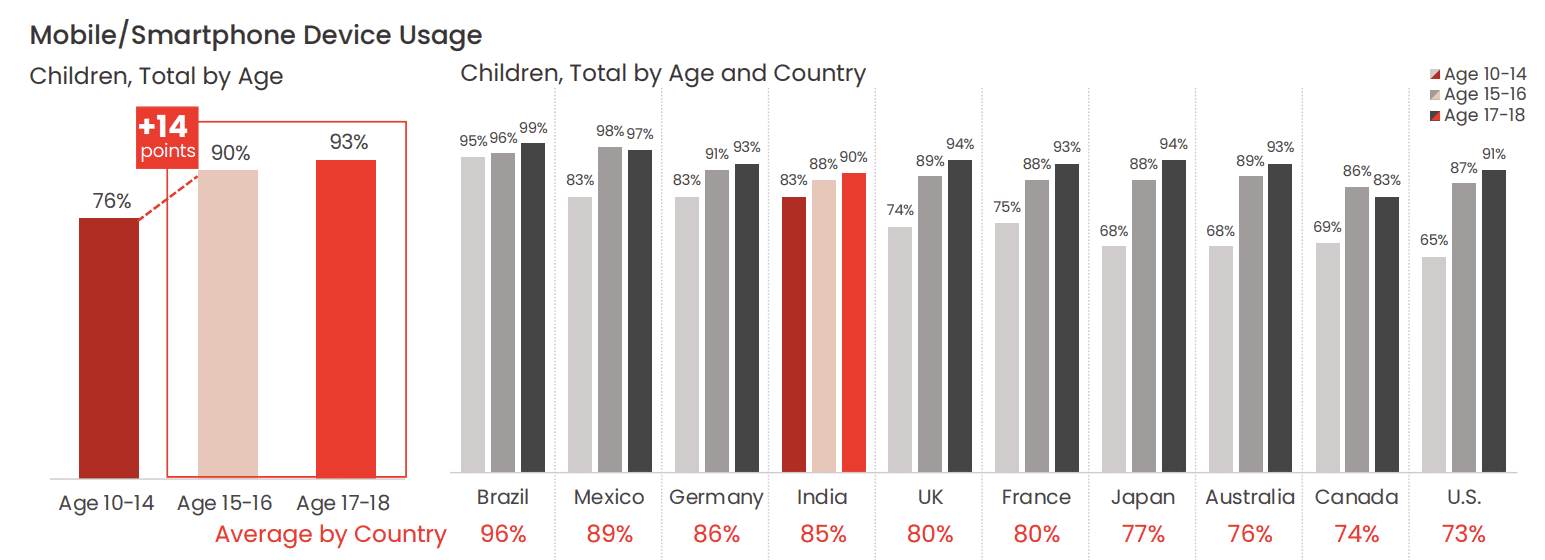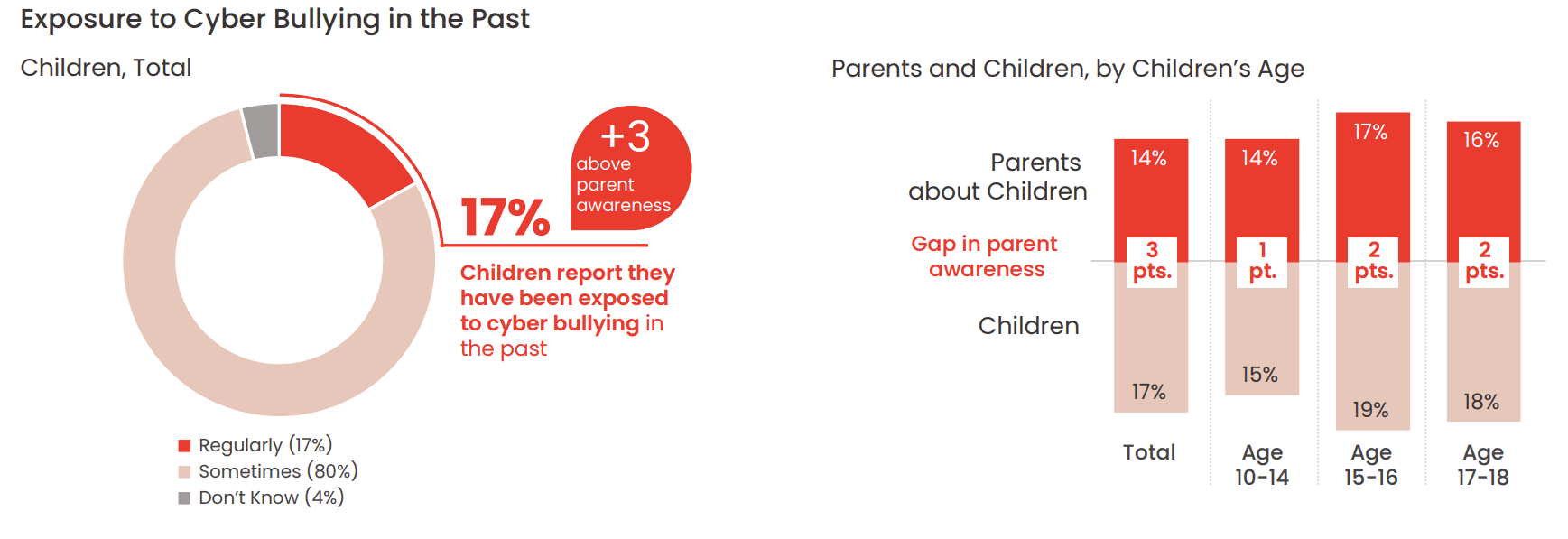Research by McAfee reveals that children from all over the world are using mobile devices more as they get closer to their teenage years. With smartphones and mobile devices leading the way online, children are getting exposed to the benefits and risks of the broader internet comprising apps, chats, entertainment, and social media.
As per the research, children in India aged 10 to 14 tend to adopt mobile more quickly than nearly all their peers worldwide. Indian parents overestimating their children’s mobile usage (5% above the global average) suggests that heavy mobile usage by children has been normalized. At the age of 15-16 years, mobile usage of teens jumps significantly, so much that it approaches levels that they will carry into adulthood.

The smartphone is one of the top two devices used by parents and children alike. However, the gaming console is at the top for children in India.
Cyberbullying in children and parents
34% of parents speak privately with people they don’t know online. As for children, this is 37%. Cyberbullying is slightly higher in India than the global average, by 5%. However, the number of children reporting private conversations with unknown persons was a noteworthy 11% higher than for other children around the world. According to the research, 17% of the children surveyed globally were regularly exposed to cyberbullying in the past.

Globally, 57% of parents and 49% of children are worried about bullying and abuse on social media. These figures are lower in India with 47% of parents stating their worry, and 42% of children saying likewise. The highest concern was reported in Mexico, with parents at 78% and children at 61%. 22% of children in India reported having experienced cyberbullying at some time. Globally, 17% of children reported incidents of cyberbullying.

Account and financial information theft
33% of parents in India reported the attempted theft of online accounts while 26% of children reported the same. 26% of parents said that their child had been exposed to possible online account theft. Both parents and children have reported incidents of leaks of financial information, including bank info, credit or debit card info, or other identifying information. 30% of parents in India said they had experienced it at some point in the past. 23% of children in India reported the same.
Biased protection
The steps taken by parents to protect themselves aren’t always done for their children hence, children are going largely unprotected on the devices they use the most to access their smartphones.

The research indicates that the girls receive more protection and oversight online than the boys. Parental controls software keeps girls protected on both their computers and smartphones more than the boys worldwide. While girls seem to enjoy a more positive online experience because their parents monitor and protect their online activity more strongly, boys tend to experience security issues more often.

Conclusion:
Children see their parents as protectors and globally, parents are the top resource for staying safe online. However, many parents do not use basic security measures such as antivirus software, malware removal tools, or password protection on their devices. What’s more, they are less likely to apply these protections to their children. This reveals a security gap between parents and children. Despite parents being worried about their children’s safety online, they have not done much to protect them.
Parents can use to keep their children and themselves protected from online security vulnerabilities in this digital age.
Image and source credit: McAfee
Read next: Latest cybersecurity trends indicate evolution than revolution, reports Trellix








